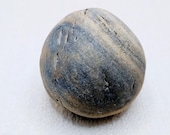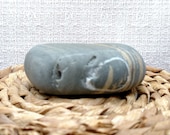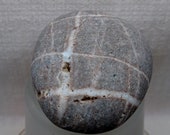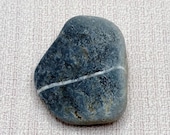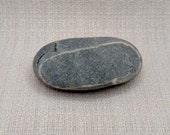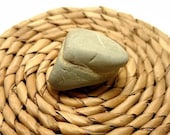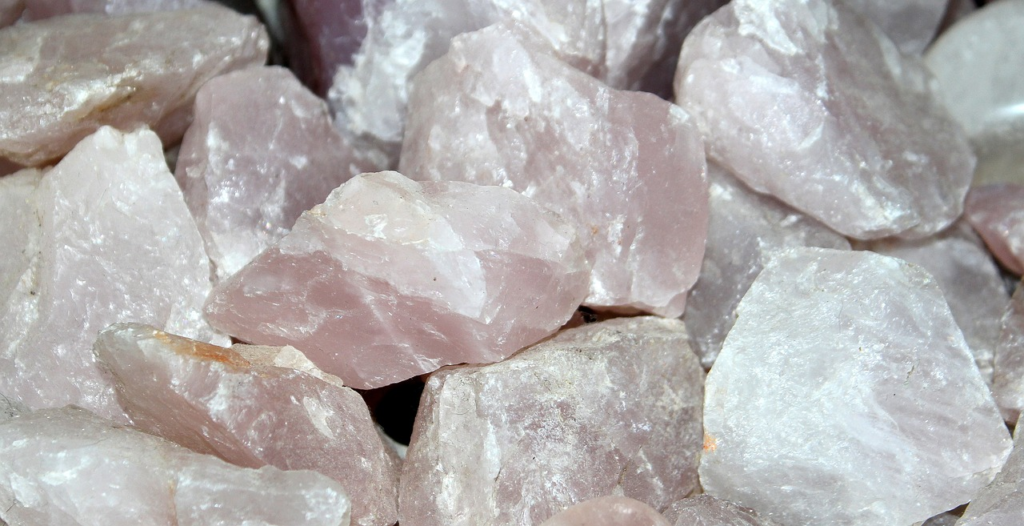The World of Igneous Rocks
Welcome to the captivating world of igneous rocks, where the Earth’s dynamic forces shape the very foundation beneath our feet. Unlike their metamorphic and sedimentary counterparts, igneous rocks emerge from the fiery embrace of molten magma. In this article, we will go into the essence of these rocks, exploring their formation, types, and the unique characteristics that make them geological wonders.

The Basics of Igneous Rocks
Igneous rocks, born from the molten depths of the Earth, hold a unique place in the geological narrative. Their formation is an intricate dance between heat and solidification, resulting in rocks with distinct textures, colors, and mineral compositions. Unlike rocks shaped by pressure or the passage of time, igneous rocks bear the imprints of a tumultuous journey through the Earth’s fiery heart.
Significance in Earth’s Tapestry
As fundamental components of the Earth’s crust, igneous rocks play a crucial role in shaping landscapes and providing insights into our planet’s geological history. From towering volcanic peaks to the solidified remnants of ancient lava flows, these rocks are the storytellers of the Earth’s dynamic past.
Formation of Igneous Rocks
The Birth of Igneous Rocks: The Formation Process
Igneous rocks, the offspring of the Earth’s molten heart, emerge through a fascinating process that involves the interplay of magma and cooling. Let’s demystify the journey from liquid rock to solid geological marvel.
Magma’s Role
Picture the Earth as a colossal furnace, and magma as the molten concoction within. Igneous rocks originate when this magma, a mix of molten rock, minerals, and gases, cools and solidifies. This transformative process is the cornerstone of igneous rock formation.
Cooling Chronicles
The speed at which magma cools profoundly influences the characteristics of the resulting rock. Rapid cooling, as seen in volcanic environments, often produces fine-grained rocks, while slower cooling, prevalent beneath the Earth’s surface, allows for the formation of larger crystals. Understanding this cooling dynamic is key to decoding the textures and structures inherent in igneous rocks.
Coastal Beach Stones
Intrusive vs. Extrusive Igneous Rocks: Below and Above the Surface
Beneath the Surface: Intrusive Rocks
Intrusive igneous rocks form below the Earth’s surface in the subterranean realm. The slow cooling process provides ample time for mineral crystals to grow, resulting in rocks like granite and diorite. These rocks, despite their hidden origins, eventually find their way to the surface through uplift and erosion.
On the Surface: Extrusive Rocks
Extrusive igneous rocks, on the other hand, undergo rapid cooling on the Earth’s surface, often as a result of volcanic activity. This swift solidification produces rocks with smaller crystals, such as basalt and pumice. Their expedited journey to the surface gives them a different texture and appearance compared to their intrusive counterparts.
Characteristics and Examples
Distinguishing between intrusive and extrusive rocks involves recognizing their textures, colors, and the size of their mineral grains. For instance, granite, a coarse-grained rock, is intrusive, while basalt, with its fine-grained texture, is extrusive. Understanding these distinctions enhances our grasp of the Earth’s geological choreography.

Factors Shaping Igneous Rocks
Cooling Rate Chronicles
The rate at which magma cools is a geological clock that leaves its mark on igneous rocks. Slow cooling allows for the development of larger crystals, while rapid cooling limits crystal growth, resulting in fine-grained rocks. This factor becomes a signature in identifying and classifying igneous rocks.
Mineral Mixtape
The minerals present in magma contribute significantly to the composition of igneous rocks. Different minerals solidify at distinct temperatures, creating a varied palette in the rock kingdom. From the silica-rich and light-colored felsic rocks to the darker mafic rocks, mineral composition becomes a key factor in understanding igneous diversity.
Environmental Etchings
The surrounding environment, whether it’s the depths of the Earth’s crust or the dynamic surface, leaves its imprint on igneous rocks. The pressure, available space for growth, and the presence of other rocks all play a role in shaping the final appearance of these geological entities.
Wishing Rocks
Types of Igneous Rocks
Classification and Definition
Understanding the Landscape: Begin the journey into the realm of igneous rocks with a focus on their classification. This section offers insights into the criteria geologists use to categorize these molten wonders.
Defining Key Terms: Demystify terms such as felsic, mafic, and intermediate, gaining a clearer grasp of the composition and attributes that distinguish various igneous rocks.
Examples of Igneous Rocks
Diversity on Display: Take a deep dive into the varied world of igneous rocks, exploring a curated collection of examples. Each rock is presented with detailed insights into its unique characteristics and the geological narratives it holds.
Significance in Geology: Explore the importance of these examples, understanding their contributions to the broader geological story. From volcanic basalt to the enduring presence of granite, each rock carries a distinctive tale.
Common Types
Unpacking the Familiar: Explore some of the most prevalent types of igneous rocks that shape our landscapes. Whether it’s the enduring nature of granite or the volcanic prowess of basalt, this section sheds light on their prevalence and diverse uses.
Beyond the Surface: Take a closer look at the characteristics that make these rocks ubiquitous. From the majestic beauty of andesite to the practicality of diorite, discover the diverse roles these rocks play in the Earth’s geological theatre.
Balancing Rocks – Cairns
Characteristics
Revealing Distinctive Features: Embark on a journey to unravel the unique characteristics that define igneous rocks. Texture, color, and crystal size become the palette through which we understand the processes that shaped these rocks.
Connecting Appearance to Origins: Bridge the gap between how these rocks look and how they formed. How does a coarse texture in granite relate to its slow cooling beneath the Earth’s surface? This section connects the dots, providing insights into the geological craftsmanship that sculpts igneous rocks.
Identification and Characteristics
Appearance and Identification
Identifying igneous rocks is akin to deciphering nature’s artwork on Earth’s canvas. Visual cues emerge as vital signposts in this geological detective journey. Let’s navigate through the key elements that define these rocks, grounding ourselves in the nuances of their color, texture, and mineral composition. This visual exploration forms the bedrock for understanding the distinct characteristics of igneous rocks.
Crystal Size and Its Significance
Crystal size in igneous rocks transcends mere aesthetics; it serves as a Rosetta Stone for decoding the geological narrative inscribed within. Here, we delve into the intricate relationship between cooling rate and crystal size. This exploration unveils a story etched in the rocks, providing profound insights into the dynamic processes that shaped these geological marvels.
Special Characteristics: Porphyritic Texture
Step into the realm of porphyritic texture, an exquisite feature that imparts an artistic essence to select igneous rocks. We usher you into the unique qualities of porphyritic texture, exploring the conditions that choreograph the formation of these distinctive igneous rocks. This special characteristic unfolds a captivating narrative, offering glimpses into the dynamic environments that birthed these rocks.

Geological Context and Fun Facts
Where Igneous Rocks Form
Let’s take a journey to discover the global distribution of igneous rocks, exploring continents and investigating the specific landscapes where these geological wonders emerge. From the intense activity of volcanic regions to unexpected corners of the Earth, we’ll uncover the diverse environments bearing the imprints of igneous formations. Join us in deciphering the geological clues that lead to the occurrence of igneous rocks.
Fun Facts about Igneous Rocks
Step into the world of igneous rocks with a collection of intriguing and lesser-known facts. These tidbits not only entertain but also deepen your appreciation for the geological stories embedded in igneous formations. From volcanic spectacles to the surprising uses of igneous rocks in our daily lives, this section promises an engaging exploration of the delightful quirks of igneous geology.
In the grand tapestry of Earth’s geological history, igneous rocks stand as vibrant threads, woven by the dynamic interplay of magma, heat, and time. As we wrap up our exploration of these remarkable rocks, let’s reflect on the key insights gained.
Coastal Beach Stones
From the fiery depths where magma transforms into solid rock to the diverse landscapes shaped by volcanic activity, we’ve glimpsed the diverse ways in which igneous rocks manifest. Their classification into intrusive and extrusive types, the rich variety of examples like granite and basalt, and the unique characteristics such as crystal size and porphyritic texture—all contribute to the intricate story of our planet.
Identifying igneous rocks becomes an art, where color, texture, and mineral composition act as signatures telling tales of their geological past. Crystal size, like a frozen clock, captures the cooling rate and offers a window into the rock’s formation history.
Geologically speaking, igneous rocks have a global presence, from the heights of volcanic mountains to unexpected corners of the Earth. The landscapes they shape are as diverse as the rocks themselves.
Before we conclude this journey, here’s a fun fact: igneous rocks, beyond their geological significance, play unique roles in our lives, from constructing buildings to adorning our countertops.
As we wrap up, consider this an invitation to continue your exploration of igneous rocks. Whether you’re a seasoned geology enthusiast or a casual learner, the world of igneous rocks has much more to offer. So, step into this fascinating realm, observe the rocks beneath your feet, and let the geological stories of igneous rocks inspire your curiosity about the ever-evolving canvas of our planet.
Frequently Asked Questions (FAQs)
What are igneous rocks?
Igneous rocks are formed from the cooling and solidification of magma or lava. They make up a significant part of the Earth’s crust.
How are igneous rocks classified?
Igneous rocks are classified based on their texture, mineral composition, and where they are formed. Common classifications include felsic, mafic, and intermediate.
What is the difference between intrusive and extrusive igneous rocks?
Intrusive rocks form beneath the Earth’s surface, while extrusive rocks form on the surface. This distinction affects their characteristics, with intrusive rocks having larger crystals due to slower cooling.
How can I identify igneous rocks?
Identification involves observing color, texture, and mineral composition. Crystal size is also indicative of cooling rates.
Where are igneous rocks found globally?
Igneous rocks are found worldwide, with concentrations in volcanic regions. Specific examples include the Ring of Fire and mid-ocean ridges.
What are some fun facts about igneous rocks?
Igneous rocks have fascinating aspects, like their role as time travelers, holding clues to Earth’s history. They’re also versatile, with some used in construction and others forming beautiful landscapes.
Why are volcanic regions significant for igneous rocks?
Volcanic regions are where extrusive igneous rocks are prevalent. The rapid cooling of lava on the surface contributes to unique rock formations.
How does crystal size relate to the formation of igneous rocks?
Crystal size is influenced by the cooling rate of magma or lava. Slower cooling leads to larger crystals, providing insights into the geological history of the rock.
What is porphyritic texture in igneous rocks?
Porphyritic texture is characterized by large crystals (phenocrysts) embedded in a finer-grained matrix. It occurs when there are two stages of cooling, first slow, then rapid.
Why should we appreciate the world of igneous rocks?
Igneous rocks offer a unique window into Earth’s dynamic history. Appreciating their diversity enhances our understanding of geological processes and the ever-changing nature of our planet.





